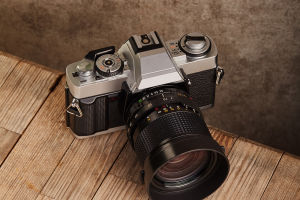Have you ever watched a film and felt your heart race, your chest tighten, or a tear form—without a single word being spoken? That's the silent power of music.
Especially in art films, where dialogue can be minimal and visuals abstract, the soundtrack often carries the emotional weight of the story. In this article, we'll explore how soundtracks in art films use subtle psychological cues to influence audience perception, mood, and even interpretation of scenes.
The Role of Music in Art Films
Art films tend to break away from conventional storytelling. They focus more on mood, symbolism, and internal emotion rather than fast-paced plots. Because of this, the soundtrack plays a critical role in guiding the audience's emotional response. Without clear-cut heroes or villains, the music can create tension, deliver relief, or evoke ambiguity—all essential to how the film is experienced.
Unlike mainstream cinema where music often supports action or dialogue, art film soundtracks frequently stand alone. They function not just as background, but as psychological agents that shape how we engage with the imagery on screen.
Psychological Techniques in Film Music
Soundtracks in art cinema often employ psychological techniques to affect the viewer's state of mind. For instance:
• Minor keys create a sense of sadness or introspection.
• Dissonance can provoke unease, confusion, or fear.
• Repetition builds tension or obsession, reflecting the inner turmoil of characters.
• Silence or near-silence can be just as powerful, directing attention to visuals or inviting reflection.
These techniques work because the brain processes music in areas linked to emotion and memory. A 2017 study, 'Music and the Brain: The Neuroscience of Music and Musical Appreciation,' confirms that music can activate the limbic system, the part of the brain that governs feelings. When used effectively in film, this activation helps build deep emotional resonance with the audience—even when there are no words.
Robert Bresson’s Use of Sound
In this film ( A Man Escaped, 1956), Bresson uses diegetic sound (sounds that exist within the world of the film) with extreme precision to immerse the viewer in the protagonist’s experience. The protagonist, Fontaine, is a prisoner planning an escape, and much of the film’s tension comes from small, hyper-detailed sounds: the scraping of a spoon against a bowl, the rustling of fabric as he unravels his bedsheet to make a rope, the faint tapping on walls as he communicates with other prisoners.
These sounds are not underscored by dramatic music or heightened for effect; instead, they are presented in a sparse, almost documentary-like manner. This forces the audience to listen as intently as Fontaine does, creating a meditative yet suspenseful atmosphere. The absence of a traditional score makes every small noise feel monumental, drawing the viewer into Fontaine’s psychological state—his patience, his fear, and his determination.
Bresson avoids telling the audience how to feel through manipulative sound techniques. Instead, he uses sound as an invitation to engage deeply with the character’s inner world, making the experience profoundly introspective. This approach is a hallmark of art cinema, where sound functions as a subtle but powerful layer of meaning rather than a tool for overt emotional guidance.
Music as Character and Narrative
In some art films, the soundtrack becomes a character in itself. It drives the narrative or reflects changes within the characters. For example, in Sofia Coppola’s Lost in Translation, the dreamy, atmospheric score by Kevin Shields and the curated soundtrack don’t just accompany the film—they embody the emotional isolation and quiet connection between the two protagonists, Bob and Charlotte. The music’s ethereal, shoegaze textures mirror their disorientation in Tokyo’s neon-lit sprawl, while its soft, drifting melodies reflect their introspective loneliness.
This technique helps the audience build a subconscious connection between sound and story arc, creating a layered experience that deepens upon rewatching.
The Impact on Interpretation
Art films often leave room for multiple interpretations. Music can nudge viewers in one direction or another. A scene without music might feel emotionally neutral. But add a slow, melancholic piano piece, and the same visuals suddenly carry a heavy emotional weight. This is where the “psychological hint” function becomes most obvious—the music is not telling you what to think, but rather shaping how you think.
Music can also offer contrast or irony. A cheerful tune playing during a visually distressing scene creates a psychological dissonance, prompting the viewer to question what's really happening. Directors use this to challenge assumptions or highlight the emotional complexity of a moment.
Expert Insight and Research
According to Dr. Stefan Koelsch, a cognitive neuroscientist specializing in music and emotion, "Music evokes activity in the brain areas that are also activated by empathy, moral decision-making, and self-relevant processing." This means film scores—especially in more emotionally or intellectually complex works like art cinema—have the capacity to affect viewers in deeply personal ways.
Conclusion: Hearing Is Feeling
Whether it whispers or roars, the soundtrack in an art film is never just background noise. It's a subtle, psychological tool that helps the filmmaker communicate without saying a word. By influencing mood, guiding interpretation, and building emotional layers, music becomes an inseparable part of the art film experience.
Next time you watch a quiet, poetic film, close your eyes for a moment. What does the music tell you that the actors do not? You might find that in the silence between words, the music is speaking directly to your thoughts.

